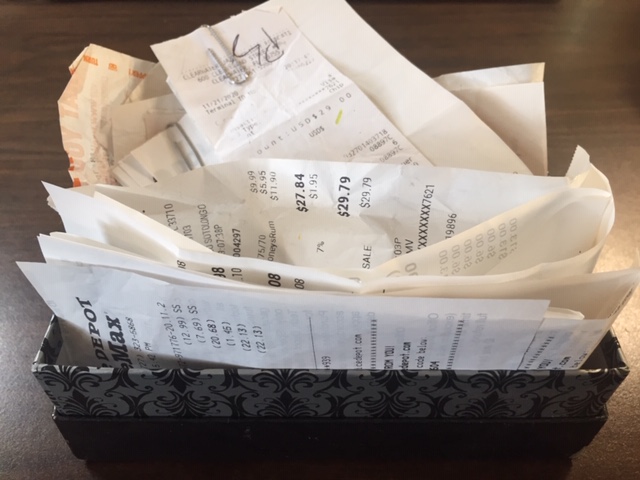6 Easy Steps to Keep Good Records
Know your numbers
As a small business owner, it’s important to know whether or not you’re making money. The amount in your bank account may not tell you the whole story. How often have you wondered: “where’s is my money?” You know you had a good month, but the amount in your bank account tells a different story. The real story lies in your financial statements, namely the Balance Sheet and the Income Statement (also called the Profit & Loss report). The shoe box filled with receipts is not going to tell you anything at all. Your books are an information and communication system.

Make decisions with confidence
The foundation of your financial statements is bookkeeping and good record-keeping. If you spend a few hours every month keeping your books up to date, you will be able to see how your business is doing. You will be able to adjust the course of your actions, make informed decisions, and you will be able to evaluate and take advantage of new business opportunities more quickly. Should you spend more on marketing to increase your sales? Can you afford to borrow money to expand your business? You need help, but can you afford to hire new employees? Here are a six easy steps to keep good record that will save you time, money and help you grow your business.
1. Separate your personal and business accounts
Simplify. Save time and keep your business expenses separate from your personal expenses. It is a requirement if your business is organized as an LLC or corporation, but even as a sole proprietor, open a bank and credit card account solely for business expenses. It doesn’t have to be branded as “business,” but it will save you time and headaches.
2. Set up a good system to keep your books
Whether you are using Excel or an accounting software such as QuickBooks Online, Xero, or others, make sure you have a system to keep adequate records. If you’re not ready to invest in a monthly subscription, Wave App offers a free solution. Like other online systems, it integrates with your bank account and credit card, which saves you time and offers reporting functions that produce your Financial reports. Whatever system you choose, make sure you are set up properly. It is worth asking a professional to help you setup correctly.
3. Schedule time to keep your books up-to-date
Whether you sit down weekly or monthly, you’ll gain by having access to an updated Profit & Loss report. Make it a priority to enter your transactions in your accounting system, scan your receipts, pay your bills and invoice your clients. There will come a time when outsourcing those tasks will become necessary, but doing it yourself at the beginning is an excellent way to learn about your business.
4. Manage your source documents
As far as IRS is concerned, the burden of proof is on you when you make an entry on your tax return. You establish proof with good records of source documents substantiating your income, deductions, and expenses. See the tax center for IRS small business resources.
Source documents are bills, invoices, receipts, canceled checks, or anything substantiating a transaction, business portion of your cell phone and internet, including cash receipts and cash disbursements worksheet. You use source documents to create your accounting transactions. They also serve as your documentation for claimed tax deductions.
Clarify: if the nature of the receipt is unclear or lack details, at the bottom, write down by hand what it is before scanning. It is hard to remember six months later.
Your receipts stuffed in a shoe box are not giving you critical real time information

Scan your source documents as PDF and save them on a cloud storage solution such as Google Drive, Box, or Dropbox. You can take a picture with your smartphone and share it directly as a PDF to your cloud storage. It is also a good idea to keep a second copy on a thumb drive as a backup.
Adopt a naming convention: name your files by category, amount, date. For example, office supplies_34.15_01052021. It will be a lot easier to retrieve.
Having your source documents online will also help you share them with your bookkeeper and/or tax accountant, saving a lot of time on back-and-forth clarification emails.
If you get audited and your source documents are recorded, the burden of proof is satisfied.
You’ll also be better prepared for tax time and reduce your costs in last-minute scrambling.
5. Documents you need to keep
6. Learn the language of business – what story are your books telling you?
With an accounting system in place, a method to organize your source documents and with regular upkeep of your system, you’ll be better equipped to understand how your business is doing.
Of all the reports available, the Balance Sheet and the Income Statement are the most important to understand. Learn what your Financial Statements are telling you.

“Accounting is the language of business“
Warren Buffett
If you need help setting up your books, need training or if you are ready to outsource some or all of your bookkeeping tasks, schedule a free discovery call. No obligation, no pressure.